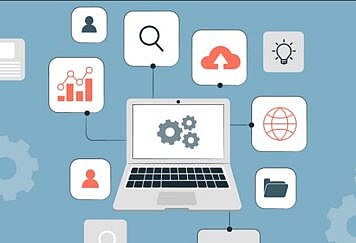A few decades ago, students needed to install desktop computers in their rooms to complete their coursework, and they had to go to the library or computer lab to use the computer on campus. Fast forward to today, and everything seems to have changed. A few decades ago, the introduction of technology to a college education started a fast-growing synergy between education and technology. Now students rely more on technology and less on in-person collaboration and printed resources. As a result, education has moved a lot towards technology, and as this trend continues, more students are discovering that they can gain as much with online learning as they would in physical classes. This has led to further adoption of technology in education and has increased more students’ access to the college experience.
Generally, universities and colleges adopt new technologies quickly, even when the educational value of these technologies has not been proven. However, history shows that universities and colleges have experimented more with innovation and technological advances, from blackboards to personal computers. As a result, some of these technologies have become permanent features of the university education system, while others have been replaced with better technologies over time.
The start of the 21st century is when technology started to gain more foothold in the higher education system, kick-started the transformation we see today. As each year passes, college classrooms experience an increase in the use of technology-dependent materials or resources such as the internet, email, computer simulations, and course web pages.
Technology has started to revolutionize the teaching and learning processes in higher institutions. It takes away the barriers that time and space impose on education to give more people access and also increases the accessibility of lifelong learning. Thanks to technology, it is no longer a must that students meet at a specified physical place and time before learning from their instructor. With these modern technologies, the whole conception of higher education institutions could change. The higher institution no longer has to be a physical location with residence halls and classrooms to pursue advanced degrees.
The Impact Of Technology On The Teaching And Learning Experiences In Colleges
Every part of higher education has been touched since technological developments in education in the 80s and 90s.
New technologies have drastically altered both instructional processes and academic administration in universities and colleges. However, when you compare the changes to college operations such as administration, housing, student services, and the teaching and learning process, you will find that the latter has experienced the most dramatic changes resulting from the introduction and further advancement of technology.
According to collegeessaywriter.com, traditionally, professors spend most of the time in class trying to disseminate information to the students through lectures and discussions. This is more common in introductory-level courses, in which students lack the foundations and knowledge about basic principles and concepts in their field of study. However, this approach has become inefficient and archaic in this era of modern technology. Computers and other web-based resources are more cost-effective and efficient than humans at disseminating basic information.
Now professors and instructors are encouraged to use the internet and do what it knows how to do well. And one of these is presenting students with information in different formats at any time of the day. In addition, course materials are more accessible on the web, so students can go for it at their convenient time and go back to it regularly to achieve competence, comprehension, or mastery.
Technology has also made higher education more collaborative and interactive. Computer-based chat rooms, course-based websites, and emails are some resources that technology enables to facilitate teamwork and communication among the students.
According to research by scholars published on useful service Superiorpapers, the collaborative learning opportunities that students have access to through technology enhances their ability to recall, understand, and solve problems. Technology also helps to reduce the work of peer writing groups, collaborative design teams, and other collaborative learning groups. And it doesn’t require that the students live within a geographic area or meet physically to be effective.
Apart from promoting collaborative learning amongst higher education students, it also promotes collaborative learning and helps to individualize and personalize education. Also, because instructors don’t have to give out a large volume of information anymore, they now have more time to deal with the students individually. Spending more time interacting with the students individually and getting acquainted with them allows the instructors to adapt their assignments and teaching strategies to align with the needs and interests of their students. The capacity of technology to deliver information in large quantities over networks also increases its potential for creating tailored educational programs to meet the individual learner at their specific needs.
Students Are More Connected Now Than Ever
College students these days give themselves more to technology than students from decades ago. For example, most people now own a smart device or other screen readers. Today, college students can move around carrying multiple devices with them to access information at any time of the day at their fingertips.
In the case of online learning, where discussion forums, course material, and search for research topics are concerned, students no longer have to spend hours buried in the library. Instead, they need to use their mobile devices wherever they are to complete their assignment and complete their academic research. They’re also able to interact better with their instructors and fellow students. This takes higher education far beyond the classroom in an unprecedented way.
Conclusion
The increased access to a college education that technology provides has changed the educational landscape from what it used to be. This needs to be addressed better by college leadership to continue maintaining student engagement. Now college students expect that course materials are digital and classes will be available partially or wholly online. This and other expectations by the students must be met by the university with the availability of technology to improve the learning environment.
Follow TechStrange for more Technology, Business, and Digital Marketing News.





